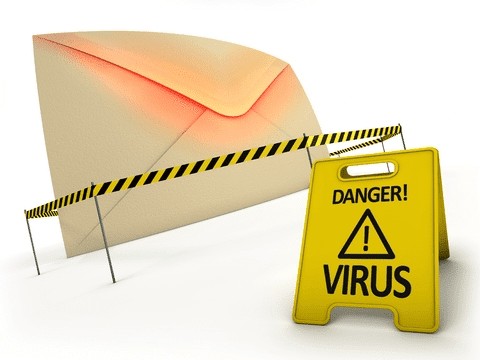One of the worst fears of every compulsive email user is opening up an email and accidentally downloading a virus or malware onto their computer/notebook or desktop.
Why is this something you have to be afraid of?
Well it’s because….
…this is the new Zika virus of the digital age.
Its ability to infect through single link clicks and its ability to replicate through your contacts and multiply make it a formidable danger that YOU have to be weary of.
Thousands of current email scans make it an impossibility to eradicate, even in 2016.
THEY ARE CALLED VIRAL FOR A REASON.
Here are some proven ways to getting rid of computer virus through e-mail.
Unexpected e-mail or spam.
“CLICK HERE FOR YOUR FREE TICKETS TO SPAIN”
This sounds great but;
More often than not these are ploys to extract your information and,
hold your computer hostage virtually.

The best decision would be to delete emails from any source you don’t recognise, especially if they contain attachments.
That being said, if they are from a trusted source but contain an attachment you didn’t expect, read on for our next tip!
Scan your attachments!
SCAN SCAN SCAN.
There’s no better tool to protect your inbox.
This is another important reason why anti-virus software’s are a must for all systems. Do not forward attachments if they haven’t passed your trusted anti-virus programs scans.
If they pass your anti-virus test, it’s probably safe to send off that attachment.
But don’t forget this step because this is a prime way for all types of viruses to spread undetected through to your peers.
Consistency is key.
“Hey open us this attachment, it’s an excel file of the data you requested.” “This is a .exe file.” “Whoops. I need access to all your files and information, in order to damage and corrupt it. Please open it.”
*SIGH* If only scam emails were this honest, it would be easy to avoid them.
If the email says the attachment is an excel sheet of data you’d love to see and the extension is a .exe file, it’s a major red flag.
Unexpected file extensions are a prime for suspicious emails, but a simple check with the sender can put your fears to rest.
So pick up your phone and verify that email!
Files to look out for:
Some files are more dangerous than others. They might not appear so.
A file that contains executable code are more likely to contain a virus than their data only counter parts. For example, files with:
.htm,
.exe,
.xls
.doc
could carry a virus,

but data files ending with extensions like:
.txt,
.csv,
.gif,
.jpg,
.mp3 and
.wav.
are virtually harmless.
Prevention is better than a cure:
Only open the email if it passes these tests!
- I know exactly what the email is and/or was expecting it.
- I have recently updated my virus scanning software and ensured that this file has passed through the scan/
- I have verified the source of the email by contacting the sender through phone or email.
And lastly:
as a fail-safe measure, a backup of all your files completes the security against viruses.
If affected by a virus, a complete wipe of your computer and restoration of backed up files (sans the infected file) will give you a fresh start. This is when it helps to have your files backed up into the cloud!
IF you’d like to learn more or need help implementing any of these tips to protect YOUR data, give our MY Computer Support specialists a call at (07) 3177 1005.


